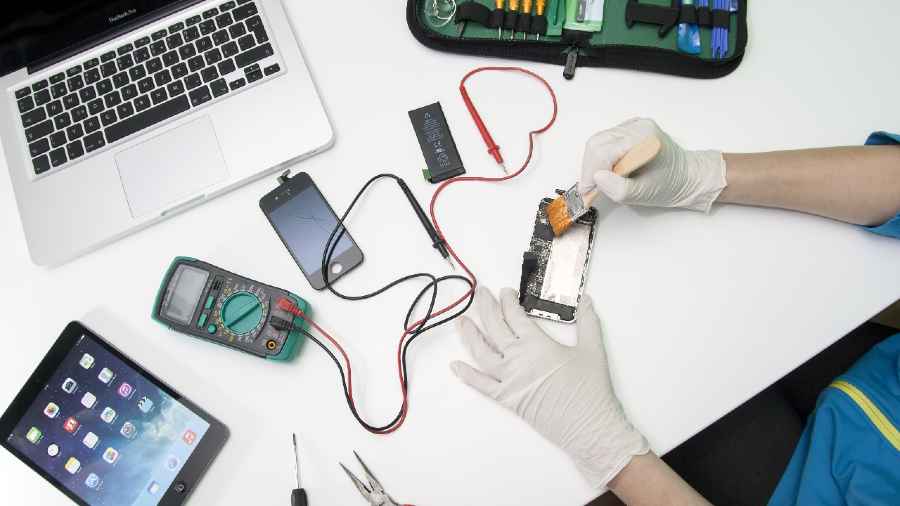Apple delivered an early holiday gift to the eco-conscious and the do-it-yourselfers: it said it would soon begin selling the parts, tools and instructions for people to do their own iPhone repairs.
It was a major victory for the “right to repair” movement, which demanded that tech manufacturers provide the necessary components and manuals for customers to fix their own smartphones, tablets and computers.
Apple, Microsoft, Google, Amazon and others have long fought proposed legislation that would make repair resources publicly available. But the movement gained momentum this summer when the US Federal Trade Commission said it would ramp up law enforcement against tech firms that made it difficult to fix their gadgets.
For decades, the idea that people could maintain their own consumer electronics has been impractical. Genuine parts were difficult to obtain, and repairs could be expensive and intimidating. When phones and computers broke, buying new ones was the simplest option.
“It’s a win for repair shops, it’s a win for consumers, and it’s a win for the planet,” said Nathan Proctor, a director for the US Public Interest Research Group, a consumer advocacy organisation that worked on the “right to repair” legislation.
My broken iPhone
Starting early next year, Apple said, people can use an online store to order parts and tools to mend its newer products, including the iPhone 12 and 13 and recent Mac computers.
The programme will focus on the most common items that need fixing, such as screens, batteries and cameras, before expanding to other types of components.
“Creating greater access to Apple genuine parts gives our customers even more choice if a repair is needed,” said Jeff Williams, Apple’s chief operating officer.
What’s the big deal?
To sum it up, you will have more options to mend an iPhone, which can bring your costs down.
Previously, it was easiest to visit an Apple store to get an iPhone fixed. But just as taking your car to a dealer for servicing isn’t the cheapest option, going to an Apple store also wasn’t the most cost-effective.
The alternative was to take your iPhone to a third party for repair, potentially for a more competitive price. When I took a broken iPhone XS screen to an Apple store, I was quoted $280 for the repair, compared with $180 from an independent outlet.
Yet Apple has made iPhone repairs increasingly difficult for third-party shops, said Kyle Wiens, CEO of iFixit, a company that sells parts and publishes instructions for consumers to repair their electronics.
Even when genuine parts were used, some repairs could be authenticated only with Apple’s software tools, which were not available to the public. Apple provided those tools only to its staff and authorised repair shops that signed a contract and agreed to buy parts solely from the company.
Apple’s new programme opens more doors. You could try fixing your device yourself to save cash. Or you could buy the parts from Apple and take them to someone else to do the repair.
All of this may encourage people to maintain their products for longer. That has implications for reducing technology waste and helping the environment.
Non Apple users
Apple was historically one of the most vocal opponents to the “right to repair” movement. The company cited
security risks — people’s data being hijacked during an unauthorised repair — as a primary reason to keep parts and instructions out of public reach.
For non-Apple customers, this news is thus significant. If Apple, one of the world’s most valuable public companies, is setting a new standard with repairs, you can expect other tech manufacturers to follow — especially if they want to avoid fines from the federal government.
NYTNS











